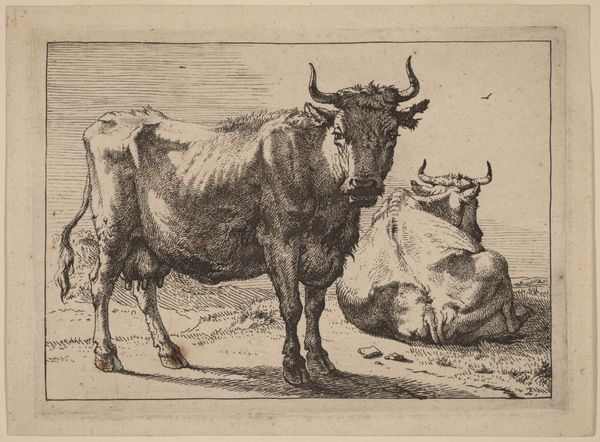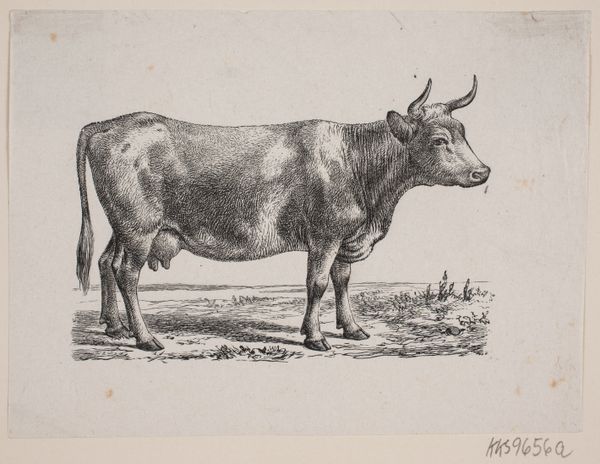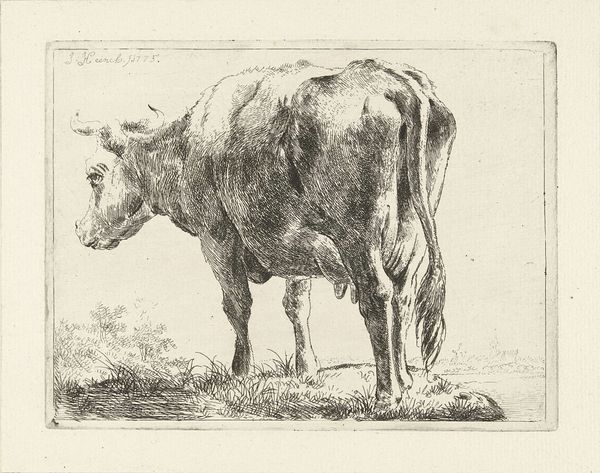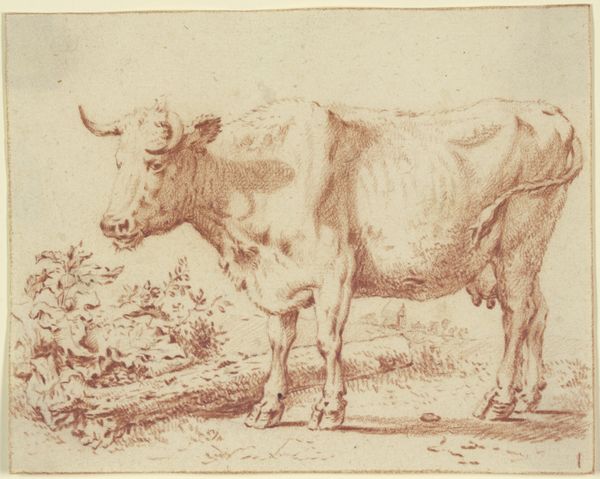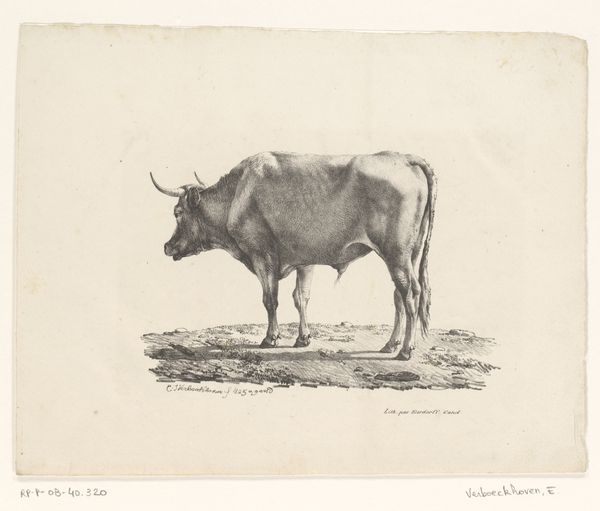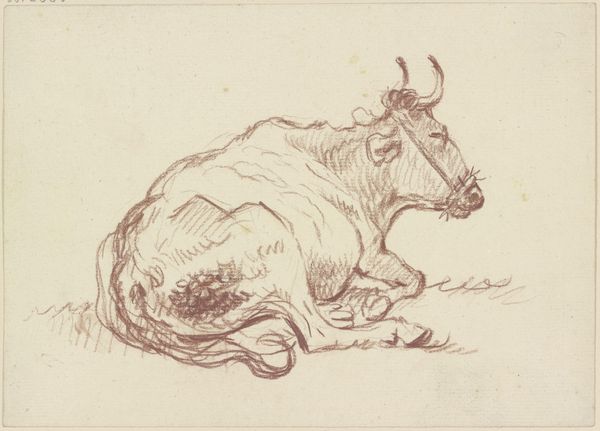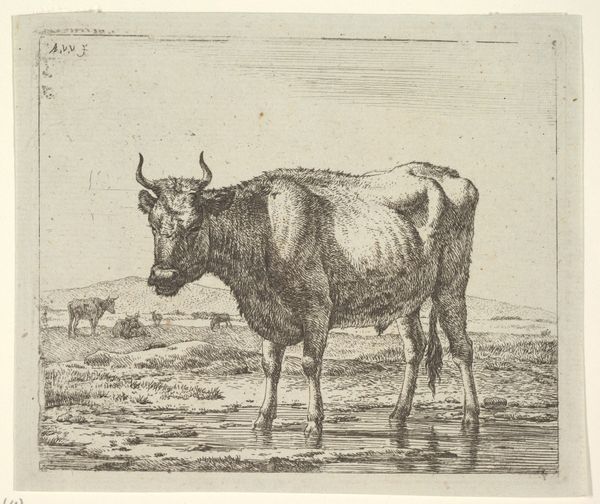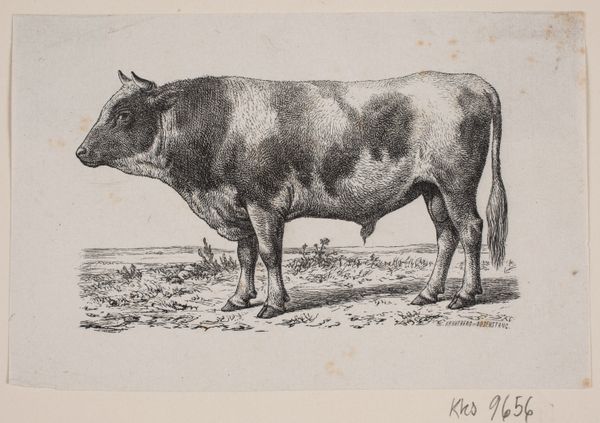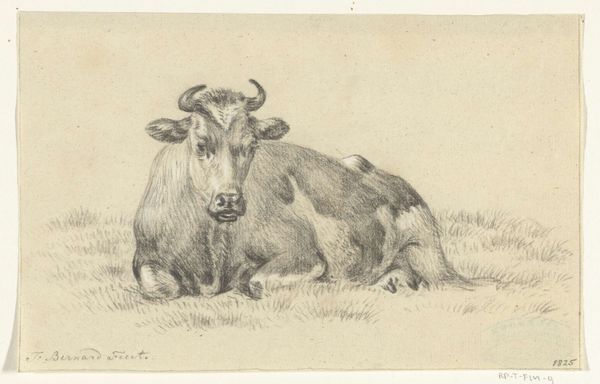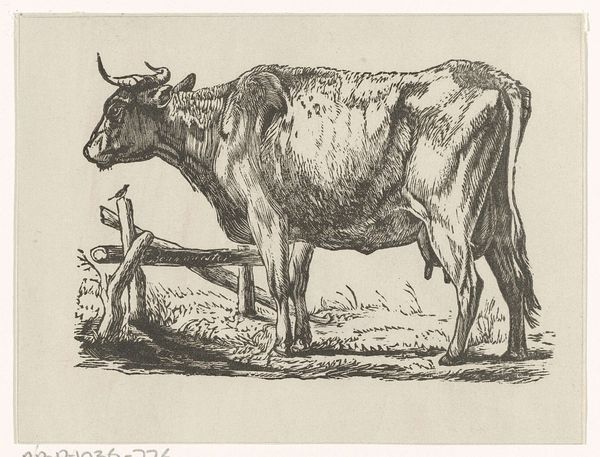
drawing, print, etching
#
drawing
# print
#
etching
#
landscape
#
figuration
#
pencil drawing
#
line
#
realism
Dimensions: height 92 mm, width 163 mm
Copyright: Rijks Museum: Open Domain
Editor: This is "Liggende koe," or "Reclining Cow," an etching by Hendrik Jozef Franciscus van der Poorten, created in 1842. I’m struck by the way the artist has captured the bulk and stillness of the animal with such delicate lines. What resonates with you most about this print? Curator: Well, instantly I’m drawn to how Van der Poorten uses the cow itself as a symbol of pastoral life and, perhaps, even a connection to deeper, older earth-mother archetypes. Look at how deliberately he renders the textures – the animal’s hide almost seems to blend with the rough-hewn landscape behind it. It becomes almost monumental, despite being so grounded. Do you notice how this echoes broader Romantic ideas about the power of nature? Editor: Yes, definitely. The realism combined with the almost heroic pose gives it a very powerful presence. I’m curious, though – do you think there’s something specifically Dutch about how cows are depicted? Curator: Absolutely. In Dutch art, particularly from this period, livestock often served as more than just depictions of farm animals. They represented prosperity, a stable rural economy, and the very essence of the Dutch landscape itself. Think of it as a symbol of national identity, intimately tied to the land and its bounty. This one is a very charged animal. Can you sense it? Editor: That's fascinating! It makes me see this image in a completely new light. It's not just a cow; it's a cultural statement. I didn’t anticipate how charged an image it would be! Curator: Exactly. It shows us that even seemingly simple subjects can be rich with historical and cultural meaning. Images carry immense symbolic weight if we know how to look.
Comments
No comments
Be the first to comment and join the conversation on the ultimate creative platform.
